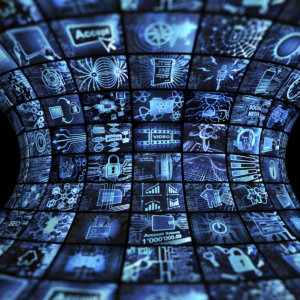Participant Questions From the Recent “Internet of Things” Webinar
Addressing some of the unanswered questions.
Topics
Competing With Data & Analytics
On July 30th, 2015, MIT Sloan Management Review hosted a free, live webinar on “Managing Data in the Age of the Internet of Things.” If you missed the webinar live, the recorded version is available for online viewing. You also can download the presentation (PDF). Thanks to everyone who participated in the webinar — we had a huge turnout.
At the end of the webinar, many participants asked questions. Unfortunately, time ran short, and we weren’t able to answer every question during the webinar itself. Instead, we’ll answer some of the most popular questions here. Sorry that we still won’t be able to get to them all, but we hope we’ve covered the ones asked by the most people. We’ve paraphrased some of the questions to provide context, combine similar questions, and anonymize them.
Do you think that an international organization would be required to take control of uniting the Internet of Things (IoT) into one system through controlling, standardizing, and providing security?
The idea of an organization to unify, secure, and simplify the IoT world is certainly appealing. Organizations could then focus on applications and usability rather than infrastructure. An integrated ecosystem could emerge with vendors able to optimize cohesive components. Even without complete security, organizations could at least quantify risk and avoid reinventing protocols.
But several issues create significant impediments. We’ll address them in terms of the elements mentioned in the question:
- Control. It would be difficult — and that’s an understatement — to reach an agreement about who would be in control. At minimum, numerous political and economic entities have conflicting interests.
- Standards. Agreements on standards are notoriously difficult to reach and often involve protracted “standards wars.” Certainly, standards will develop (and are beginning to emerge), but looking back on the growth of the Internet as an example, standards tend to develop over time and use rather than through initial fiat.
- Security. IoT should be able to build off existing security rather than requiring a fundamentally new initiatives. While IoT does have idiosyncratic areas of emphasis (such as ease of physical access or ability to update), ideally, information security improvements can benefit both IoT and other computing devices.
Similar to the development of Internet protocols, it is likely that IoT standards will first be de facto standards, followed in time by de jure standards as our collective experience with IoT develops. Perhaps international organizations will have a greater role at that time.
Which should come first: the capacity to deal with data, or the capacity to design good questions that will lead to data collection and analysis?
While this might seem like a classic chicken-and-egg problem, we don’t think it has to be. The capacity to handle the proliferation of data from IoT is likely a different organizational capability than the capacity to design good questions. Certainly, novel and insightful questions may lead to increased (or different) data collection. And available data may influence good questions. But each should grow in sync with the other.
It doesn’t make any more sense to build massive overcapacity for future data than it does to continue to design great questions without any realistic way of generating answers. Instead, continuous small steps in both areas can build off each other and develop into organizational processes without unnecessary risk from large investments in either area.
In the article “Minding the Analytics Gap,” from the Spring 2015 issue of MIT Sloan Management Review, we frame this slightly differently: as producing and consuming analytical results. Both the capacity to handle data and the ability to design good questions are key to producing analytical results. However, IoT will place increasing demands on organizations to improve their capacity to consume analytical results — and that’s where we’ll likely see a bottleneck.
How important is business process management maturity to position the organization in better place to use IoT data?
We think the impending flood of data, particularly from IoT, may exposes weaknesses in existing process management in general and governance in particular. Organizations may have been able to get by before the deluge of data, but it’s going to get harder.
However, organizations that have invested the time and resources into robust process management may find dividends from these investments in the age of the Internet of Things.

